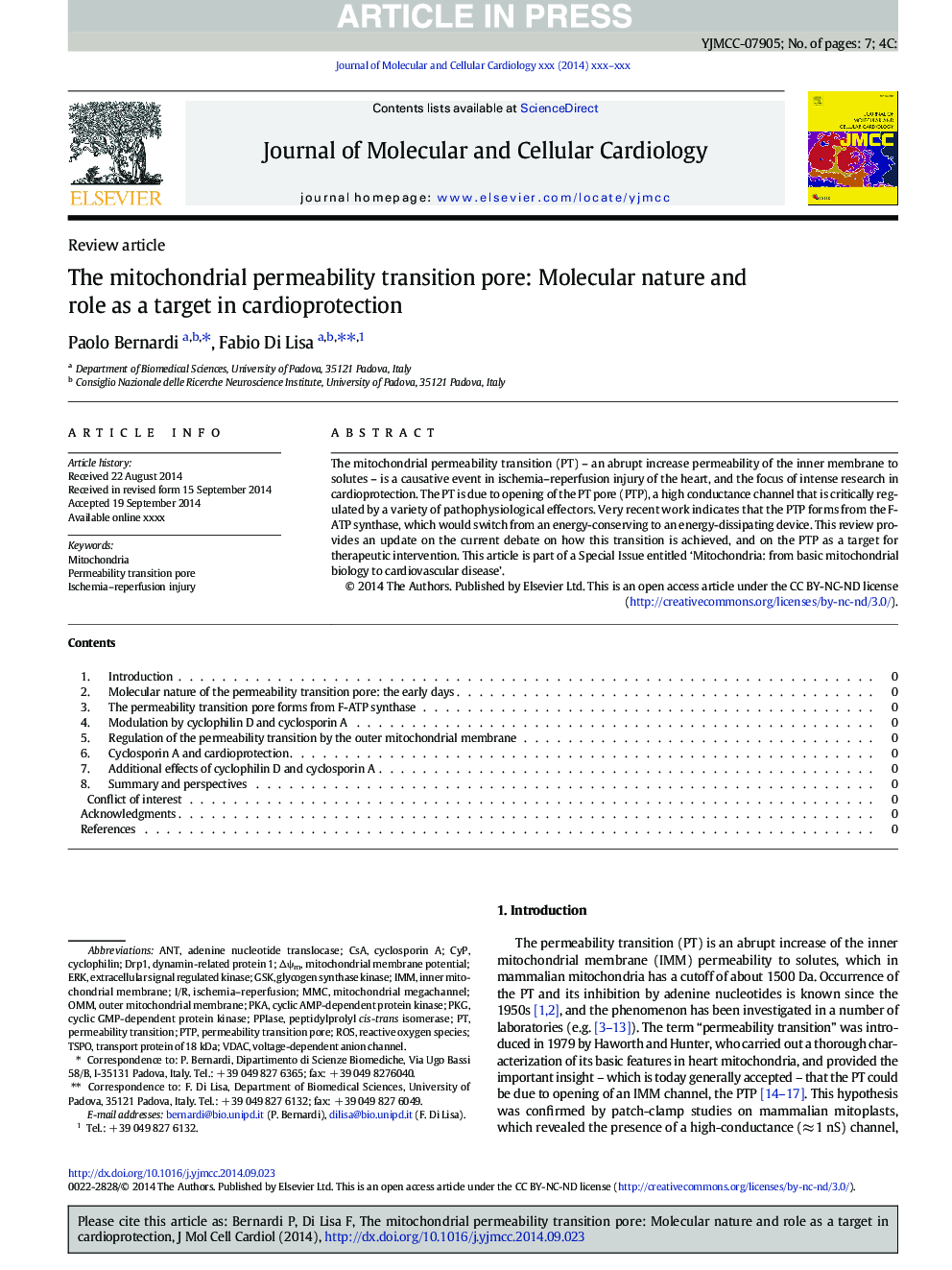| Article ID | Journal | Published Year | Pages | File Type |
|---|---|---|---|---|
| 8474515 | Journal of Molecular and Cellular Cardiology | 2015 | 7 Pages |
Abstract
The mitochondrial permeability transition (PT) - an abrupt increase permeability of the inner membrane to solutes - is a causative event in ischemia-reperfusion injury of the heart, and the focus of intense research in cardioprotection. The PT is due to opening of the PT pore (PTP), a high conductance channel that is critically regulated by a variety of pathophysiological effectors. Very recent work indicates that the PTP forms from the F-ATP synthase, which would switch from an energy-conserving to an energy-dissipating device. This review provides an update on the current debate on how this transition is achieved, and on the PTP as a target for therapeutic intervention. This article is part of a Special Issue entitled "Mitochondria: from basic mitochondrial biology to cardiovascular disease".
Keywords
MMCmitochondrial megachannelCyclic GMP-dependent protein kinaseOMMPPIaseGSKPKGTSPOVDACDrp1ΔΨmPTPpKaCyPERKANTI/RROSIschemia–reperfusion injuryPermeability transition porePermeability transitionimmCSAischemia–reperfusionadenine nucleotide translocaseinner mitochondrial membranecyclosporin Acyclophilinextracellular signal regulated kinaseouter mitochondrial membraneMitochondriaMitochondrial membrane potentialdynamin-related protein 1Cyclic AMP-dependent protein kinasevoltage-dependent anion channelglycogen synthase kinaseReactive oxygen species
Related Topics
Life Sciences
Biochemistry, Genetics and Molecular Biology
Cell Biology
Authors
Paolo Bernardi, Fabio Di Lisa,
